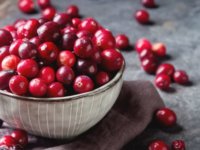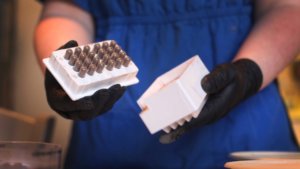
Lactose Intolerance: Symptoms and Causes
Lactose intolerance: the most common food intolerance in Asians
Lactose intolerance is due to the deficiency of an enzyme called lactase, normally found in the small intestine. When lactase is insufficient, the lactose (milk sugar) contained in dairy products cannot be fully digested.
When undigested lactose moves to the colon from the small intestine, it interacts with normal intestinal bacteria.
What are the symptoms of lactose intolerance?
“Common symptoms of lactose intolerance include bloating, abdominal cramps, nausea and diarrhoea,” say doctors at the Department of Gastroenterology and Hepatology atSingapore General Hospital, a member of the SingHealth group. These symptoms usually begin about 30 minutes to two hours after consuming milk or dairy products including powdered milk, ice cream and evaporated milk.
Symptoms usually disappear when foods with high levels of lactose are removed from one’s diet.
Is lactose intolerance acquired?
Lactose intolerance can be caused by genetic factors or it can also develop due to age, bowel injury or gastrointestinal disorders.
If the small intestine produces less lactase after an illness, surgery or injury to the small intestine, the lactose intolerance can last from a few days to a couple of weeks, and may be reversible. In children in particular, such a temporary lactase deficiency can also result from a viral or bacterial infection.
In rare cases where babies are born ‘lactose intolerant’ due to a complete absence of lactase activity, these babies require lactose-free formula as they are intolerant to lactose found in their mothers’ breast milk.
Lactose Intolerance: Diagnosis and Tips to Cope
How is lactose intolerance diagnosed?
A simple self-test can help you determine your status – temporarily limit milk products in your diet. If your bothersome symptoms disappear, you are probably lactose intolerant.
A doctor can use specific tests to diagnose lactose intolerance.
“Such testing can include a blood test as well as a hydrogen breath test to evaluate your body’s reaction after drinking a high-lactose solution,” say doctors from the Department of Gastroenterology and Hepatology, Singapore General Hospital (SGH), a member of theSingHealth group.
No treatment can improve the body’s ability to process lactose, but the symptoms can be controlled by keeping to a diet that limits lactose.
Should I completely stop drinking milk?
Milk or dairy products can be consumed depending on individual tolerance. Most people with lactose intolerance can still tolerate some milk and other dairy products without the lactose intolerance symptoms, so long as they take these in small amounts.
Tips to cope with lactose intolerance:
- Drink different types of milk – Instead of cow’s milk, drink lactose-free milk, soya milk or rice milk. Goat’s milk is also lower in lactose, but it is best to take it with meals to delay gastric emptying. This will then provide additional time for lactose digestion and lessen symptoms of lactose intolerance. You could also try chocolate milk as cocoa may have a suppressive effect on human lactose intolerance.
- Consume fermented dairy products – Fermentation improves the digestibility of milk. Fermented milk products include yogurt and fermented cheese, such as parmesan and cheddar.
- Consume dairy products with meals – This helps to slow down the digestive process, so symptoms of lactose intolerance are less likely to appear.
Completely avoiding lactose-containing foods could lead to certain dietary deficiencies, so it’s best to consult a dietitian beforehand. Dairy products contain important nutrients and are especially rich in calcium. So, if you are avoiding dairy products, you need to make sure you do get enough calcium from other foods, to meet your body’s requirements.
Below are some examples of lactose-free food that are rich in calcium:
- Calcium-fortified cereals
- Calcium-fortified soy products (calcium-fortified soymilk, tofu and taukwa)
- Fish with edible bones (ikan bilis, canned mackerel, sardines and salmon)
- Some nuts and seeds (almonds, Brazil nuts, etc.)
Depending on individual tolerance, people with lactose intolerance may be able to consume milk and dairy products in small amounts. They should always make sure that they get enough calcium and other nutrients from non-dairy sources in their diet.
Original article at: https://www.healthxchange.sg/digestive-system/stomach/lactose-intolerance-symptoms-causes
Photo credit: same website.








